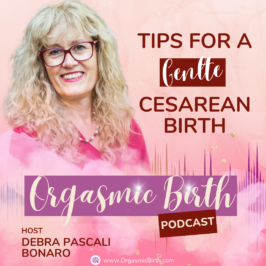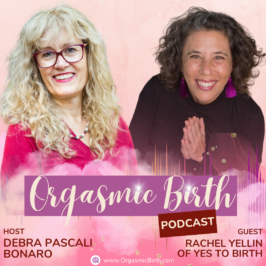Submitted by: Dr. Amali Lokugamage
Sir Willia m Osler’s (1849-1919) Canadian physician and one of the four founding professors of John Hopkins Hospital had a famous quote which resonates with most clinical educators, their learners and, intuitively, patients alike: ‘for the junior student in medicine and surgery, it is a safe rule to have no teaching without a patient for a text, and the best teaching is that taught by the patient himself.’ (Osler, 1904)
m Osler’s (1849-1919) Canadian physician and one of the four founding professors of John Hopkins Hospital had a famous quote which resonates with most clinical educators, their learners and, intuitively, patients alike: ‘for the junior student in medicine and surgery, it is a safe rule to have no teaching without a patient for a text, and the best teaching is that taught by the patient himself.’ (Osler, 1904)
Looking to present time this quote is a good pointer to new developments in medical education from The Health foundations Report in 2011 called Can patients be teachers? Involving patients and service users in healthcare professionals’ education says ‘Besides changes in patients’ expectations, there is now a greater appreciation about the environmental, social and psychological determinants and consequences of ill health, and about healthcare treatments. There is a need, especially in medicine, for new models to guide clinical practice. These have included the bio-psycho-social model (Engel, 1989), patient-centredness (Stewart et al., 2003), shared decision making (Coulter, 2009), and, most recently, and radically, self care (the Health Foundation, 2008). All put the patient’s experience, perspective and priorities at the centre – or, in the case of ‘self care’, in the driving seat.’
The University that I teach at, University College London has incorporated patient pathways in the medical school syllabus to allow medical students to see the patient’s journey in the healthcare system through the patient’s eyes. We want the medical student to accompany patients on their journey in seeking healthcare to the clinic appointments, to the wards and also to their home. We want them to hear the perspective of patient’s, such as how they felt they were treated by the clinic receptionist, how it felt to receive the results of medical investigations, what it feels like receiving information from doctors, nurses or midwives. We have a well established cancer pathway and have more recently developed a maternity patient pathway. The students will be assessed in the maternity pathway by a letter that they write to the woman about what they learnt from accompanying them on their journey. We hope that this experience will open the eyes of students to the intangible aspects of healthcare such as compassion, empathy, respect for autonomy and how the absence of these qualities affect healthcare users.
When I was a medical student studying obstetrics in 1989 there were a lot more normal births and I was able to see a fairly good spectrum of types of birth. It was mandatory for us at the time to observe 10 normal births and then also attend 10 normal births. We were also required in addition to see caesareans and instrumental deliveries during an 8 week attachment. However the present day 8 week medical student attachment there is also the requirement to study not only obstetrics and gynaecology but also have days with the surgical breast team and study urological men’s health. There are also far less normal births happening and now it seems that medical students before they qualify may only be able to observe and perhaps not conduct 1 to 3 normal births. So opportunities to see normal birth have drastically reduced in medical training. Purely physiological births, birth centre or home birth as rare and ecstatic births usually are never heard of. Maternity care is the only speciality within medicine that doctors are immersed in physiological health as well as ill health, so medics are required to stretch to their paradigm of health delivery to not just dealing with pathology but to extend it to maintaining health. This is often a hard stretch as we are so used to dealing with just illness.
It is within this context that I, as a medical educator, show the cohorts of medical student that come to my hospital the film Organic Birth. This is a shorter version of Orgasmic Birth which fits better into an hour’s teaching session. The patient vignettes are very valuable as they capture material such as patient stories and experiences that an average medical syllabus medical students would not easily be able to deliver. Some of the dialogue in between the vignettes of women’s experience can be difficult to listen to as there is direct challenge of the medical model of birth – medical students can feel very uncomfortable. However the women’s stories are so rich and such a valuable resource and I make sure that I facilitate and guide the student around these challenges. Another obstetric colleague and high risk obstetrician, who also leads women’s health medical school education, at my hospital also thinks the women’s experience film clips in Organic Birth are a very valuable teaching resource.
I am finding 2 sorts of responses from medical students to Organic Birth when asked for feedback. Highly cohesive and engaged students value and rate highly it’s content and the less cohesive groups who are more interested in quantitive aspects of medicine who find the film uncomfortable and require more lecture based sessions on the psychobiological aspects of birth to contextualize the women’s experiences in Organic Birth. I suppose it is like the difference between more right sides and left sided brain people and also may have something to do with their intrinsic brain oxytocin neurochemistry guiding their social connection patterns.
In an ideal world I would love to have a re-edit of Organic Birth for medical professionals with some materials for small group sessions of facilitated teaching to more fully explore the issues raised in this very unusual and valuable documentary on the dimensions of the ‘meaning of birth’ to women, their partners and their families.

Dr Amali Lokugamage MBChB, BSc, MSC (Epidemiology), MD, FRCOG, obstetrician & gynecologist & author of The Heart in the Womb: An Exploration into the Roots of Human Love and Social Cohesion.
If you are a birth worker take time to enjoy Dr. Lokugamage’s human rights lectures published on the WHO website about respectful maternity care.
Everyone will enjoy the video about her book The Heart in the Womb which talks about cerebral oxytocin and its effects









Birth Memories: Are you Thriving in Childbirth & Motherhood? - Orgasmic BirthOrgasmic Birth
[…] strive to help women thrive. I was so delighted when a few years ago I met an amazing obstetrician Dr. Amali Lokugamage. We are both advisors to Human Rights in Childbirth and shared a passion for working to demand and […]